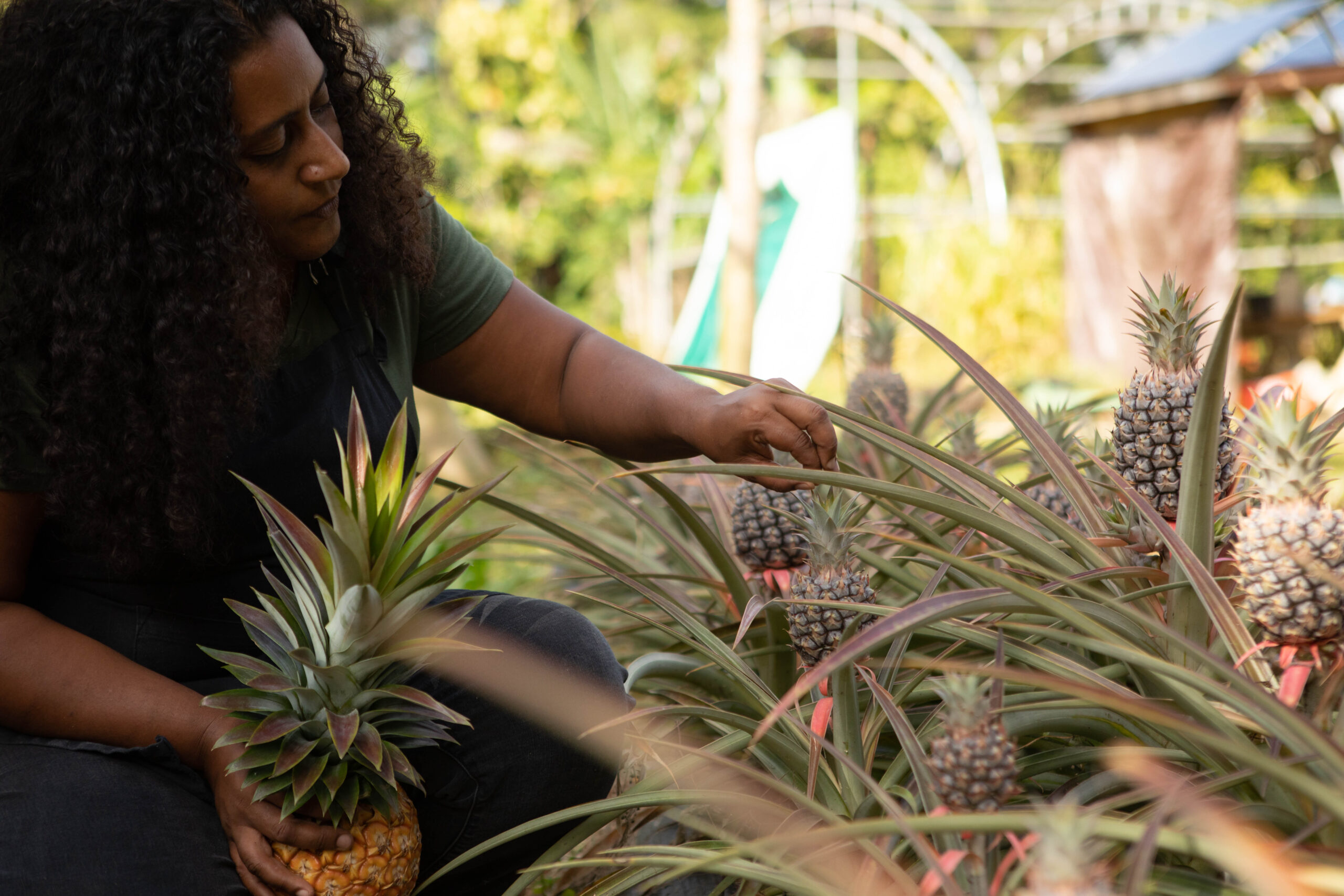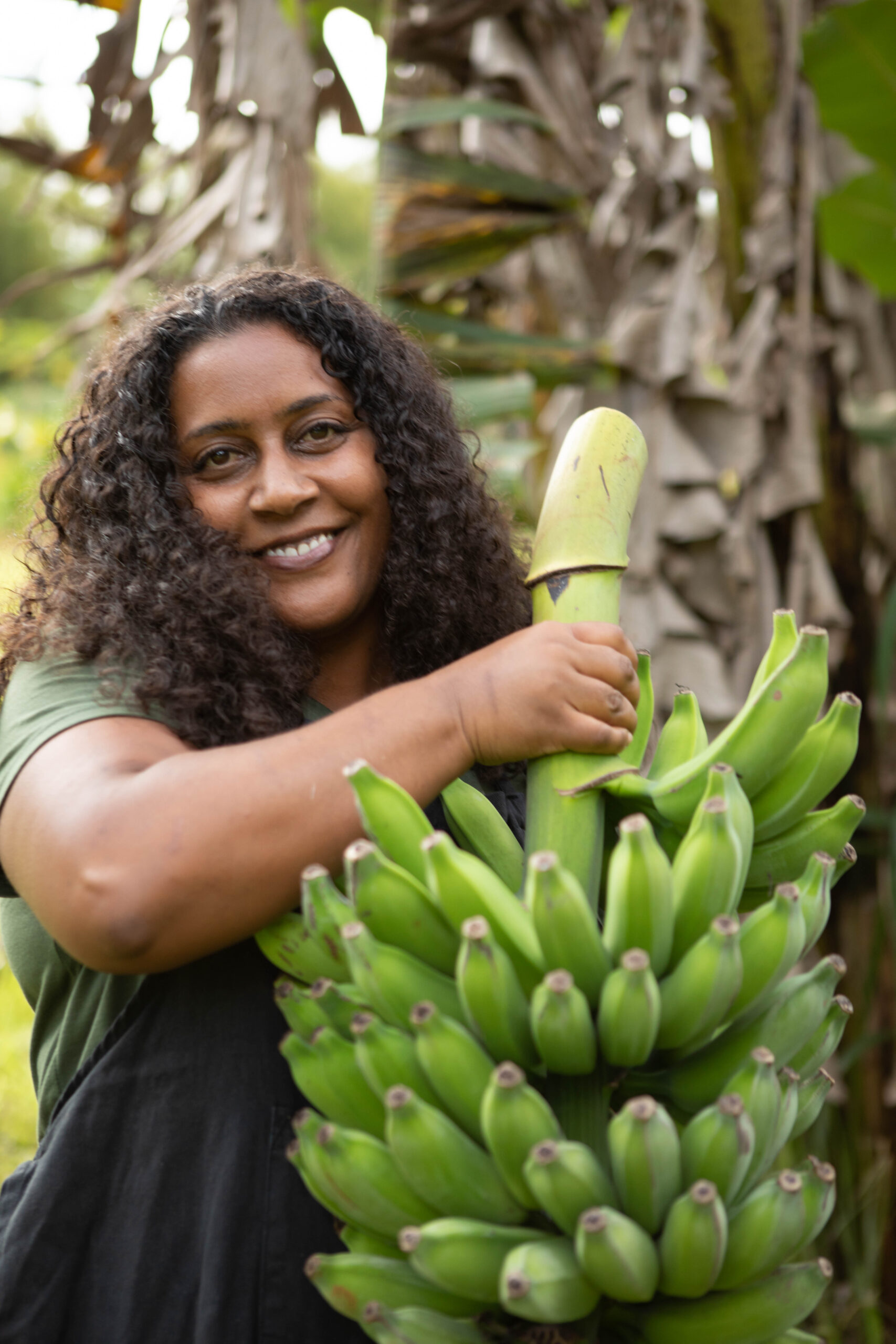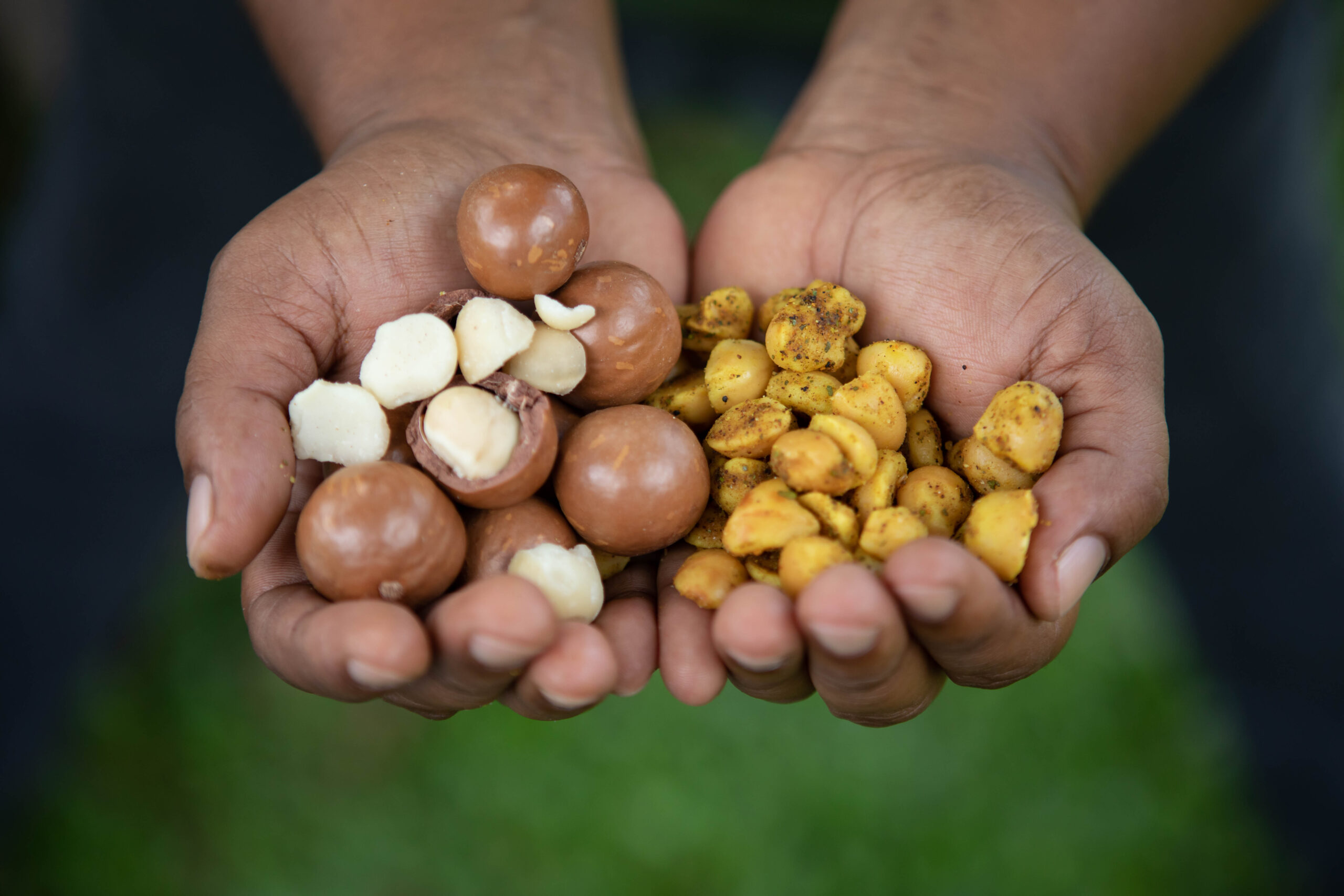Forging Her Path — For Herself and Other Women Food Leaders

Hawaii has rich culinary traditions that infuse its Native Hawaiian cuisine harmoniously with other culinary influences, making Hawaii a vibrant place to taste history. While the United States at large is dealing with big agriculture as a form of producing food, Chef Gida Snyder, founder and owner of Slow Island Food & Beverage Co., embodies values that are natural to Hawaiians: local, sustainable and communal growing. These values give her a distinct perspective, one that opposes the fast and massive processing of food. Gida’s Slow Food values are what makes her products and connection to farmers so strong — and they are why she is a Small Business Supporter of Slow Food USA.
Growing up between New Mexico and visiting Hawaii frequently throughout her childhood, Gida is connected to Kaua’i. “Despite the fact that I’m not native Hawaiian, having a grandmother who [was] well loved in the community kind of gave me that kind of connection to Kaua’i in particular,” Gida said.
Before making Hawaii her permanent home as a chef, she lived another life in New York doing non-culinary careers.
Throughout those experiences, Gida traveled and ate in every place she visited. But this wasn’t when she decided to make food more than a passion; she still didn’t see it as a career for her just yet. “I always looked at it as like, ‘Oh, well, something I enjoy doing for fun at home.’ That can’t possibly be something I would enjoy doing for work. So I’ve kind of avoided that for a really long time, even though food has always intrigued me,” Gida said.
After her travels, she hit a point in her life like many people who live in big cities, and had an epiphany. “There is a point at which you are either there as a lifer or the city kind of tells you to go, and New York told me I needed to go somewhere else,” Gida explained. “And at the time, I still had a strong connection to my grandmother and wanted to be in a very different environment.” Before moving to Hawaii, she took a knife skills class, and when she made it to Kaua’i, she got her first cooking job there. She then went to culinary school in Oahu, where a student in their last semester introduced Gida to the Slow Food chapter she founded.
While Gida didn’t know what Slow Food was before, once she did, it felt like a natural fit for her because it was a movement for good, clean and fair food. For Gida, this idea was a no-brainer, but thinking about it more, she had a deeper view of what Slow Food means — and how far the United States strayed from the movement.



Gida said, “I realized in culinary school that most of the direction and energy go into creating chefs who can cook in hotels for tourists. That doesn’t necessarily look at all the aspects of what it takes to get that food to the plate.”
After cooking privately and working as a harvest chef, she had the opportunity to take over a catering business, and she’s been growing that business ever since. With the exception of the extraordinary male chef who is in charge of Slow Island’s production, her kitchen is primarily composed of women because it’s “so easy when you work with like-minded chefs who just so happen to be women and they just carry themselves in such a way that you don’t have to posture. You don’t have to constantly prove yourself,” Gida said.
Gida believes that for women to command respect in the culinary world, they have to take control. “I’ve noticed that the most successful women chefs are because they kind of forge their path.”
Gida’s business, Slow Island (formerly Gida’s Kitchen), grew once Gida knew she wanted to do more with it. She didn’t want to be the face of the business, but she did want to celebrate what was “unique and special about the ingredients that get used in my products,” Gida explained. “One of the ideas I have is to take some of the products and make a ready-to-drink beverage that you would find on the shelf.” While Gida’s products will not scale disproportionately to what farmers grow, Gida has branched out into new ways people experience her products.
“We created a subline of products called Mahiʻai Reserve. And mahiʻai, in Hawaiian, means farmer. So it’s the farmer’s reserve. It’s essentially unique products that are limited edition,” Gida said. They are actually numbered, and everything we’re making is a total of 500 bottles of something. For example, we have a five-pepper smoked onion hot sauce. These unique ingredients are grown by a farm, specifically by Kalalea View Farm, 15 miles from here. We created it so that we could really do the most to hopefully give credit where it’s due, which is to the farmer who took the time and risk to really grow these unique ingredients.”
As an established culinary professional, Gida continues to practice Slow Food principles today. She creates products and works with locals to find and source products that stay true to using local products. Gida explains, “I have this one woman who has several chili bushes in her yard, and she lives on the far side of the island, and so every so often, I’ll get a phone call from her.” She continues, “I can buy them [in a] 3-pound bag from her. So you know, those are the types of connections that I cherish, and I’m working on expanding more.”
Without local food from local farmers, “there is no Slow Island period,” Gida said. “Nobody likes to feel like they’re being admonished for their choices as far as being a chef in sourcing to make your dish that you really want to make. But if the quality of your dish is improved exponentially by sourcing something that was literally picked yesterday as opposed to picked six weeks ago, then you, as a chef, should feel the obligation to do that.”
Gida’s philosophy is simple. “If you spend a little bit more time finding the best possible ingredient version of that ingredient, most of the time it is literally at your fingertips. It’s at the farmers market.”